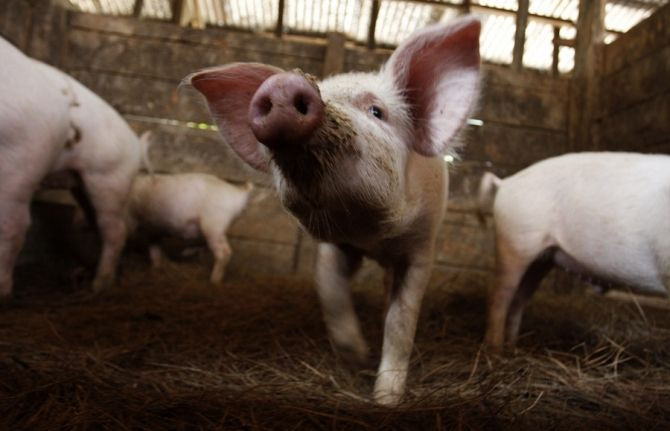CDC: US Swine Flu Infections Rare, Rose in 2011

Human infections with the flu circulating in swine are rare but increased this year, leading to the hospitalization of three people who recovered, the Centers for Disease Control and Prevention said Friday.
Since 2005, 35 cases have been reported in the United States but their frequency rose in 2011.
The CDC said Friday it received reports of 12 infections from August 17 to December 23 in five different states.
The CDC said the infections were “with influenza A (H3N2)v viruses that have the matrix (M) gene from the influenza A (H1N1)pdm09 virus (formerly called swine-origin influenza A [H3N2] and pandemic influenza A [H1N1] 2009 viruses, respectively.”
The cases occurred in Indiana, Iowa, Maine, Pennsylvania, and West Virginia. Six of the 12 patients had no identified recent exposure to swine.
A case in Indiana involved an adult male who is exposed to swine at work, the report said. Two children in West Virginia who attend the same day care were among the most recent cases.
Indiana
The Indiana patient reported having a fever, cough, shortness of breath, nausea, vomiting and body aches on October 20. He was hospitalized for 4 days. He did not receive treatment with flu antiviral medications and recovered fully. Confirmation of the virus took place between October 28 and October 31.
West Virginia
On November 19, one West Virginia child less than 5 years old developed an acute fever after 1 week of cough and congestion. The child had been hospitalized two days earlier for an unrelated condition. The child was discharged on November 21 and has recovered from the illness.
On November 29, a second child became ill with fever, cough, diarrhea, and rhinorrhea. The second child did not receive medical care and recovered fully from the illness. A respiratory specimen obtained from the child on December 7 was confirmed as influenza A (H3N2)v with the M gene from the A(H1N1)pdm09 virus.
Published by Medicaldaily.com



























